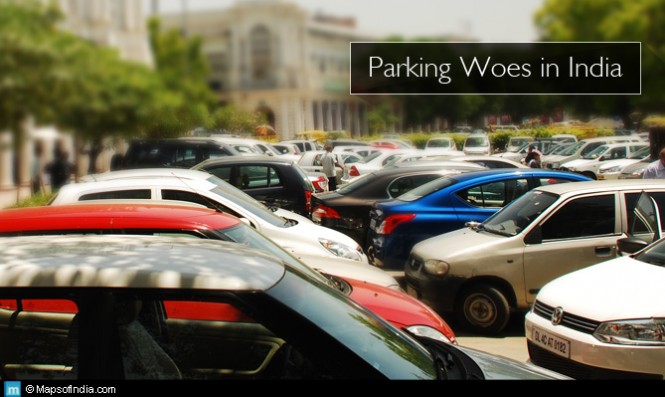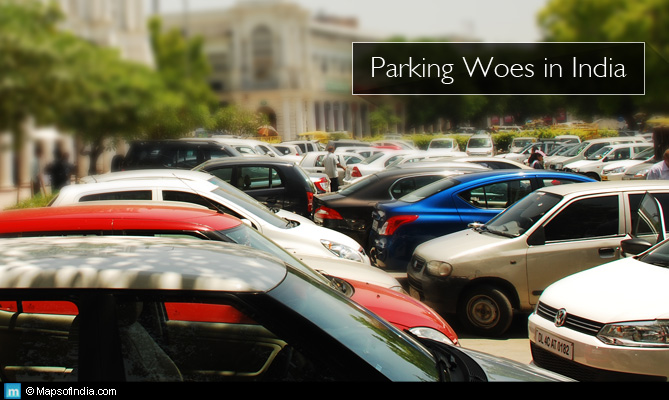 India is facing a new problem nowadays – lack of sufficient parking space. With families getting smaller and the total number of motor vehicles exceeding the total number of heads per family, the parking scenario is woefully falling short of the current requirements in the country. The situation is such that on any given working day approximately 40% of the roads in urban India are taken up for just parking the cars. The problem has been further exacerbated by the fact that nowadays even people from low income group are able to own cars. The number of families with cars has become much more than what the country is able to manage.
India is facing a new problem nowadays – lack of sufficient parking space. With families getting smaller and the total number of motor vehicles exceeding the total number of heads per family, the parking scenario is woefully falling short of the current requirements in the country. The situation is such that on any given working day approximately 40% of the roads in urban India are taken up for just parking the cars. The problem has been further exacerbated by the fact that nowadays even people from low income group are able to own cars. The number of families with cars has become much more than what the country is able to manage.
As it is, the cities in India are highly congested and on top of that the parked cars claim a lot of space that could otherwise be used in a better way. Thanks to poor, and at times zero, navigability, Indian cities are regarded as some of the worst options for living. One can also add the issue of pollution to this mix and understand the enormity of the crisis. In this context it needs to be understood that the Indian cities, with the possible exception of Chandigarh, were never planned in such a way so as to accommodate a deluge of cars as is the situation now. The apathy of present day urban planners has only made the situation worse.
Possible Solutions to the Menace
One feels that the authorities who plan the Indian cities should really look into the situation. The public policy needs to be structured in such a way that the issue can be tackled effectively. One way to handle this is to take away the subsidy provided for parking. The charges for parking should be determined as per the land value of the particular area or the rent that is being charged for the same. It is also important that major sites of tourist interest, the heritage zones and shopping areas are made strictly off limit for cars.
However, one feels that it might not be that easy to introduce rules and regulations for parking in India considering the general mentality here is to get all public services for free. However, such rules have to be imposed if the problem is to be solved. If you can buy a car, you should have enough money to pay for its parking charges as well. The policy of politicians to waive off parking fees before elections to garner votes has also left things in the lurch at times. It is felt that if people have to pay parking fees they will feel disinterested from owning a car because of the costs. Cities can be categorised into zones and parking can be charged on the basis of average congestion for that area.
There are some other ways to solve car parking issues, such as multi-level car parking. Multi-level car parking is of two types – conventional and automated. Conventional multi-level car parking can be done anywhere – over the ground or under it. The open parking areas are more preferred as opposed to closed areas in case of parking above the ground as specialised fire protection systems and mechanical ventilation are not needed in this case. Automated multi-level car parking is more difficult to achieve in India considering the fact that it is entirely technology driven and does not involve much human element. As it stands now, India and Indians might not be ready for this technology. The more conventional option seems to be the better bet.
What Happens in Advanced Countries?
In the First World areas such as Europe people need to get to an area of tourist attraction either on foot or by using a mode of public transport. It is not like in India where people can drive to any such place in their cars and clog up the surrounding area with their private vehicles. In a developed country, which is among the prominent manufacturers of cars, not many people own cars. The reason for this is that a car license is really expensive and people who want one also need to prove that they have sufficient parking space in offices as well as their homes. It also helps that public transport is of the highest order in these regions with monorails, meglevs, metros and high speed trains for example.
As is the case with majority of the other public services in India, accountability has to be the key over here as well. The policies can be made but the people have to obey them properly and make them successful. Also, the authorities need to understand that restricting access to car ownership will only be a short term solution. For the longer term solution, proper planning needs to be done. The state of public transport in India needs to be improved. Unless and until the modes of public transport are not plentifully available, people will keep on relying on cars and the problem will never be solved.




